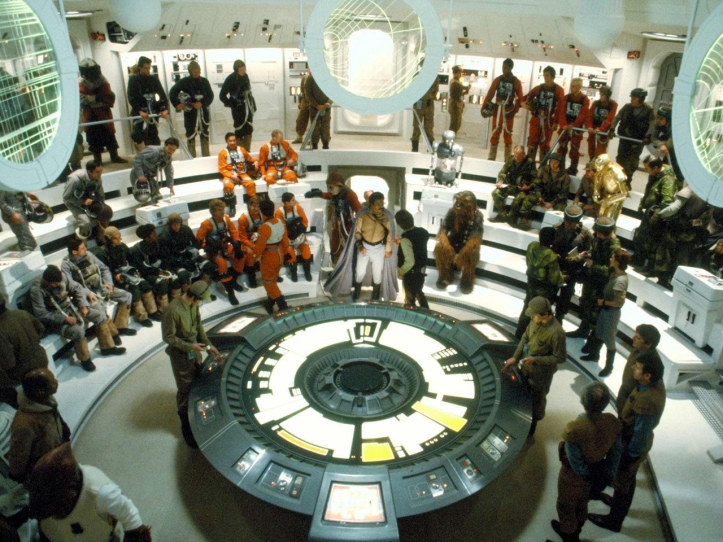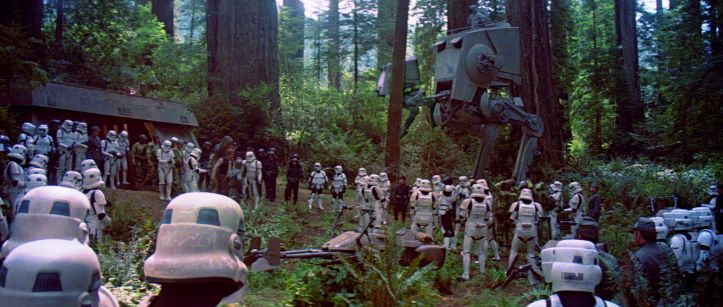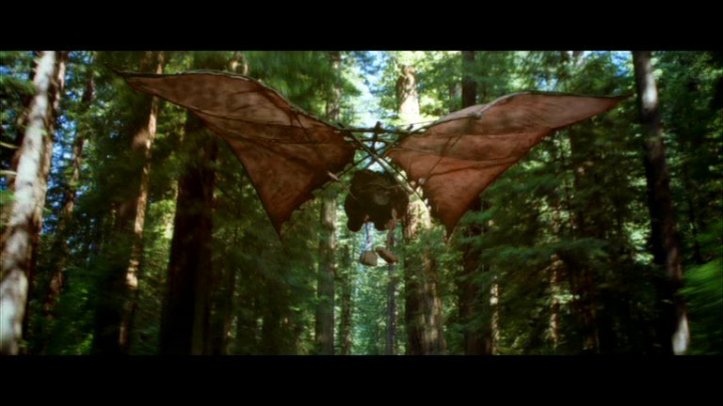I saw this from ASO, or "Angry Staff Officer", He used Star and other cultural references to discuss the Modern Army and the issues facing it. I have used articles in the past from ASO on my blog. I consider him creative in his analogies. My boddy Mack tuned me into ASO a while back so it is his fault, LOL

Warfighter: Battle of Endor
“He will win who, prepared himself, waits to take the enemy unprepared.”– Sun Tzu
In war, timing and will are two of the intangibles that are hard to train for. A battle can be all but won when suddenly the unforeseen takes place: Jackson arrives at Antietam; Sheridan rides back to Cedar Creek; the Germans appear out of the Ardennes. Timing is often a virtue of happenstance – but note that it is leaders that consider timing that are often the most successful. The other aspect – the will to win – is even more difficult to gauge. Take the US Army after World War II. By 1950, it the Army was in such bad shape that three divisions got swept backwards through South Korea by barely their same number of North Koreans. The American Army had lost the will to win – or was too used to winning. Both are grave dangers that should give commanders at all levels pause.
So it was in the Imperial military forces by the time of the Battle of Endor. Yes, they had suffered a massive reverse when the Death Star I was destroyed, but in that and subsequent engagements they had winnowed the Rebel fleet down to a fraction of what it had been. And even then, it was nothing compared to that of the Imperial Navy. Similarly, the Imperial Army reigned supreme on land, as the Rebels could do little to oppose Imperial armor without air support. Simply put, they grew used to winning.
Sound familiar?
Which is why the Battle of Endor stands as a lesson against hubris. It’s one we in the US Army could use. While we failed to win recent conflicts – at least by the convention term of winning – we’ve also not been defeated. And true defeat can be terrifying and horrendous. We prepare for victory but we don’t spend much time preparing for a defeat on the battlefield.
But back to Endor. Let’s break this thing down, shall we?
Intelligence
Although the Empire had a wide net of spies and technological collecting devices, their intelligence section categorically underrated the intensity of the Rebel attack. In letting out that he himself would be on board the Death Star II, the Emperor believed that he was using information operations to draw the Rebels into direct engagement. And while the Emperor rightly identified small Rebel military actions in the time leading up to the main battle as a diversion, that did not prevent him from being too preoccupied on his own plan – that of capturing Luke Skywalker – to notice the danger the Empire faced.For their part, the Rebel Alliance relied heavily on indigenous peoples for HUMINT (Human Intelligence) and ALINT (Alien Intelligence). Most notably, Bothan spies relayed intelligence back to the Rebel Alliance, paying a heavy price for it in casualties. Had the Rebels been able to shield their sources better perhaps they would have been able to maintain a more robust collection network. As it was, the intelligence was enough to provide the Rebel Alliance with the information that they needed to assemble a strike force. That said, Admiral Ackbar and Mon Mothma should have realized that the intelligence provided information that was just too good to be true: a half finished and not battle-ready Death Star with the Emperor on board. Lacking trained intelligence analysts, the Rebel Alliance was nearly doomed from the get-go.

Which was fortunate, as Imperial counterintelligence was feeding the Rebels everything that they wanted to hear, to include allowing Rebel Corona Squadron to see the Imperial fleet dispersing away from the Death Star. The Emperor permitted this squadron to escape to carry the news back to Rebel Alliance headquarters, masking his Star Destroyers behind Endor. However, his over-reliance on his own abilities of intelligence gathering using the Force methodology caused him to stop gathering data once the battle began to go as he predicted. Blinded by his belief in infallible methodology, he failed to see the fluidity of battle.
Imperial intelligence did, however, preserve one very key advantage: they protected the information that the Death Star II was an operational system.
Movement and Maneuver
Imperial forces were arrayed with the majority of the fleet forces masked on the far side of the planet Endor, in easy reinforcing range of the Death Star II. The Imperials maintained a ground task force consisting of one Legion on the forest moon of Endor to guard the shield generator and the supply dump that was sustaining the Death Star II. This force consisted of some heavy armor which was restricted to the supply dump and command center, light armor of AT-STs which provided perimeter protection for the shield generator, and detachments of Stormtroopers. A scout element ostensibly provided intelligence, surveillance, and reconnaissance (ISR) capabilities to the Imperial task force but it was not used to its full potential. And as mentioned, the Imperials also had the Death Star II with its capability to destroy Rebel capital ships with ease.The Rebels divided their force into three elements. Admiral Ackbar commanded the fixing force, composed of the capital ships of the fleet whose mission was to bring the Imperial fleet into engagement and provide cover for the starfighter attack. The assault force was a small special operations detachment commanded by General Han Solo, which would infiltrate the forest moon, seize the shield generator, and disable it to allow for follow-on operations. This would then permit the exploitation force of General Lando Calrissian’s starfighter squadrons to penetrate the Imperial defenses around the Death Star II and deliver the decisive blow that would destroy the enemy’s center of gravity.
Solo’s assault force infiltrated the forest moon and immediately made contact with two enemy scout troopers. Rather than bypass and evade, Solo opted to attempt a capture – this failed, and one trooper escaped. At this point, the strike force cohesion broke down as Luke and Leia took off after the trooper. This action indicates that there was little in the way of a pre-mission brief. With no GOTWA, Han and the rest of the strike force moved off to find the two missing leaders rather than continuing the mission – endangering the entire operation. Leia met up with the Ewoks, conducted a Key Leader Engagement, and managed to integrate into their society. Which was vital, as the Ewoks soon captured Han, Luke, Chewbacca, R2D2, and C3PO. Between Leia’s influence and Luke’s ability to exploit the culture’s religious traditions, the strike force leadership managed to get free and made some powerful allies.
The Ewoks, though simple, possessed capabilities across the air and land, with direct and indirect fires capabilities. Irregular forces though they were, they possessed the element of surprise.
On D-Day, Luke began a diversion by turning himself in to the Empire, thereby drawing the Emperor’s attention from the engagement. Since the Imperial forces seldom allowed junior commanders any autonomy, this essentially decapitated their force. It also distracted the attention of Darth Vader, although he would return to the engagement from time to time.


The assault force managed to disable the shield and the exploitation force engaged the core of the Death Star II, destroying it. Having lost their flagship and main weapons system – as well as their leadership – the Imperial forces lost all momentum. Suffering heavy losses, several captains were able to retrograde their frigates and escape to fight another day. In this way, the core of the Imperial fleet – their Star Destroyers – formed a force that the First Order would eventually rally around. Space and the ability to jump to hyperspace did not permit the Rebel Alliance the decisive engagement needed to crush the Empire for once and for all time.

Fires
Aside from naval gunfire being used between ships and the use of the Death Star II as an orbital bombardment platform, there was little use of coordinated fires across the battlespace from either side. Only the Ewoks showed the type of initiative to build and utilize indirect fire projectile weapons. Used in conjunction with ground forces and aerial bombardment, these weapons proved their worth when engaging the more technologically advanced Stormtroopers.
Sustainment
In the Battle of Endor, the Empire displayed the weakness of all conventional forces: being tied down to one area for logistical reasons. With the forest moon of Endor used as a supply dump for building the Death Star II as well as the home for its shield generator, it inhibited the Imperial fleet from completely abandoning the site. As such, the Empire fought a positional engagement rather than one of maneuver.Mission Command
The Rebel Alliance was greatly aided by having a multitude of skilled leaders who were given the authority to extemporize or innovate where needed during each step of the engagement. This is in contrast to the highly stratified Imperial forces who could only obey orders from the top and only in accordance to the plan. Once the plan fell apart and the leadership stopped sending orders, the numerically and technologically superior Imperial forces were left dead in space, so to speak.As a sign that the Rebels were learning how to protect their communications, the assault force decided not to use comlinks during infiltration so as to avoid signal emanation. Of course, this caused difficulties when the force was separated but it did allow for covert insertion.
Protection
Protected by its shield rather than anti-ship guns, the Death Star II ended up becoming almost a liability to the Imperial Fleet. Having to hold the strategically important ground where the shield generator was located, they had no room to maneuver. Additionally, the fleet was stuck defending the battle station rather than being able to concentrate their fire on key Rebel ships. The lack of adequate anti-air/anti-ship capabilities hurt the Imperial fleet’s ability to engage single place fighters and bombers, which the Rebel Alliance used to their advantage.Amazingly, out of all the battles and engagements in Star Wars, only the battle on the forest moon of Endor demonstrated engineer capabilities. The Ewoks – masters of multi-domain battle – integrated log obstacles into their engagement area and covered them with fires. Much maligned, the Ewoks would be the only force out of this entire engagement to receive a “GO” at the U.S. Army’s National Training Center. Which is perhaps the greatest tragedy in all of this.

Good one, glad you're feeling better!
ReplyDeleteHey Old NFO;
DeleteI am glad I am feeling better, looking forward to seeing everyone at NRAAM